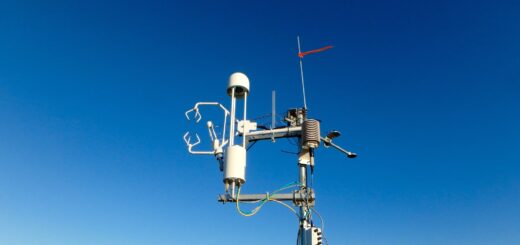Did Rogue Waves Sink Edmund Fitzgerald?
5There are many theories on the sinking of the SS Edmund Fitzgerald, the freighter that went down in Lake Superior in November of 1975. Some of these include that faulty hatch covers slowly flooded the craft; that the ship had structural issues; or that it ran aground on a shoal that weakened its hull.
Another theory relates to the wave action on Lake Superior the day that the Edmund Fitzgerald sank. It deals with what have been called “rogue waves,” or even “killer waves” by some. These waves are said to be twice as tall as surrounding wave heights and highly unpredictable.

The SS Edmund Fitzgerald in 1971. (Credit: Wikimedia Commons User Greenmars via Creative Commons 3.0)
The theory has been relatively disregarded in the past because confirming the existence of the rogue waves had been difficult. But researchers at the University of Wisconsin-Madison, studying near the Apostle Islands, have found that the out-of-nowhere waves are possible on the lake.
The researchers have been using a sensor mounted on the bottom of Lake Superior, likely an acoustic doppler current profiler or similar device, to gauge waves in the area. Their efforts have revealed that rogue waves do form, though the ones scientists have found — as high as 17.7 feet when others at the time averaged 8.9 feet — aren’t nearly as tall as those thought to have occurred when the SS Edmund Fitzgerald sank (56 feet).

Model showing the storm that sunk the SS Edmund Fitzgerald in 1975. (Credit: National Oceanic and Atmospheric Administration)
During certain wave conditions, the scientists have found that the waves can group together. For example, there could be three or four of the rogue waves in one hour and then they’d just go away for the rest of the day.
That adds a little credence, though no certain proof, to the “rogue waves” theory. Originally put forth in 2000, the theory has long held that it wasn’t just one wave that downed the ship, but three.
How do you think the SS Edmund Fitzgerald sank? Will we ever truly know what brought down the famous freighter? Please leave a comment and share your thoughts.














The “Three Sisters” are fairly well known on Superior, but Anderson reported experiencing two that nearly put her under for good. And at a speed that would have reached the Fitz about the time she disappeared from radar. Thing is, no one’s how long a rogue can stay together after it forms.
I know two men who we part of the group that added the 50 foot extention to the Edmond Fitzgerald. These men knew by adding this extention to the center of this ship she would be weakened. The owners of the boat proceeded with the work anyway. The ship broke where this extension of the boat was added.
Personally, I think waves did contribute to the sinking of her. 1, she was carrying summer loads in winter, which means she is carrying more weight, and with the huge waves of November, both of these factors contributed. The crew definitely knew what was coming. The pilot house door is open and in the locked position, and with them exploring the inside of the ship and not discovering a body in there, that would have to mean they got on a raft and escaped. The crewman by the bow probably fell overboard from a raft is my guess. When the ship sinks, the rafts and life boats would go down with her unless deployed… which can only mean they KNEW it was coming. Chances are they all fell overboard due to the huge waves, and in a raft and waves like that, you aren’t gonna have almost any protection or chance to live due to the possibilities of flipping over and getting frostbite/hypothermia. So in the end, there is absolutely no possible way for it to be ineffective closure of hatch covers. Like captain Cedric Woodard once said; “them hatches weight tons, they sit there, and can’t get off, so how could that much water come thru?” That is my theory.
[…] was overwhelmed by the storm and may have been capsized by a series of extreme or rogue waves. Others have suggested that the ship suffered a massive structural failure on the surface and broke […]
[…] was overwhelmed by the storm and may have been capsized by a series of extreme or rogue waves. Others have suggested that the ship suffered a massive structural failure on the surface and broke […]